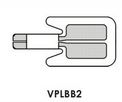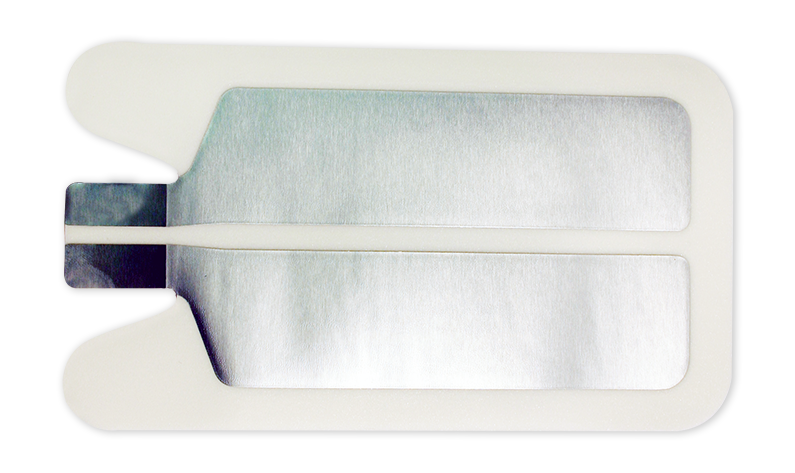(MC2/SEAL) SPLIT PATIENT RETURN ELECTRODE,neonate,s.u.VPLBB2
Outdated Article
(ESU) SPLIT PATIENT RETURN ELECTRODE, s.u.
Definition
A dispersive conductor intended to be fastened to a patient and connected to an electrosurgical generator, to allow return of electrical current from the patient to the generator during an electrosurgical procedure. The return electrode is necessary for monopolar electrosurgical functions.
Because of frequent patient burns at pad sites, the RECQM (Return Electrode Contact Quality Monitoring) system was developed. The generator has a microprocessor that monitors the quantity and quality of contact the return electrode makes with the patient. Monitoring return electrodes are easily identifiable: they have a split foil surface as opposed to a large single sheet of foil on the pad. With the RECQM system, if electrode contact is interrupted the generator will alarm and deactivate.
Synonym
Bovie pad, grounding pad, sticky pad, safety pad and patient return pad.
Specifications
Technical specifications
Flexible sticky pad: a polymer covers the conductive foil: the adhesive edge is needed to hold the pad in direct contact with the patient's skin, lowers skin resistance and fills patient skin irregularities.
Sterile and single use
3 sizes:
- For adults (body weight of > 15 kg) EEMDESUC404
- contact surface = 140 cm²
- total surface = +/- 180 - 200 cm²
- For children (body weight of 5 – 15 kg) EEMDESUC1001
- contact surface = 70 cm²
- total surface = 100 - 130 cm²
- For neonates (body weight < 5kg) EEMDESUC1002
- contact surface = 40 cm²
- total surface = +/- 70 cm²
To be Ordered Separately
EEMDESUA1003: an additional connecting cable to secure the connection between a SPLIT return electrode and the generator (cable with REM-pin connector).
Instructions for use
Select the site for application of the return electrode so that the current paths between the active and return electrode are as short as possible and run lengthwise or diagonally to the body.
Apply the return electrode on the closest upper arm or upper leg, depending on the operating field, but no closer than 20 cm.
The application site must be dry, shaven, clean (do not use alcohol to clean as this dries out the skin) and free from metal jewelry.
The return electrode must not be applied to damaged or injured skin, no ECG electrodes or implants (bone pins or plates) are in the path of the current, ensure that the patient's heart is never in the path of the current.
Precautions for Use
The return electrodes may be used only by trained medical personnel.
Use only return electrodes that are compatible with your HF generator.
The return electrodes are ready to use. Do not use any additional contact gel.
Check the return electrode regularly, and after moving the patient, to ensure that the entire surface makes contact. If a return electrode is partially pulled off, it can cause damage to the skin.





![[EEMDESUA405] (MC2/SEAL) CABLE fr return electr.s.u. 5m,con22x28mm V11K250](/web/image/product.template/570873/image_256/%5BEEMDESUA405%5D%20%28MC2-SEAL%29%20CABLE%20fr%20return%20electr.s.u.%205m%2Ccon22x28mm%20V11K250?unique=7a6f805)
![[EEMDESUE10-] ELECTROSURGICAL SYSTEM (Lamidey SEAL), 230V + accessories](/web/image/product.template/572834/image_256/%5BEEMDESUE10-%5D%20ELECTROSURGICAL%20SYSTEM%20%28Lamidey%20SEAL%29%2C%20230V%20%2B%20accessories?unique=c44ae67)
![[EEMDESUC1003] (MC2/SEAL) SPLIT PATIENT RETURN ELECTRODE,neonate,s.u.E7512](/web/image/product.template/587033/image_256/%5BEEMDESUC1003%5D%20%28MC2-SEAL%29%20SPLIT%20PATIENT%20RETURN%20ELECTRODE%2Cneonate%2Cs.u.E7512?unique=6c2eea3)